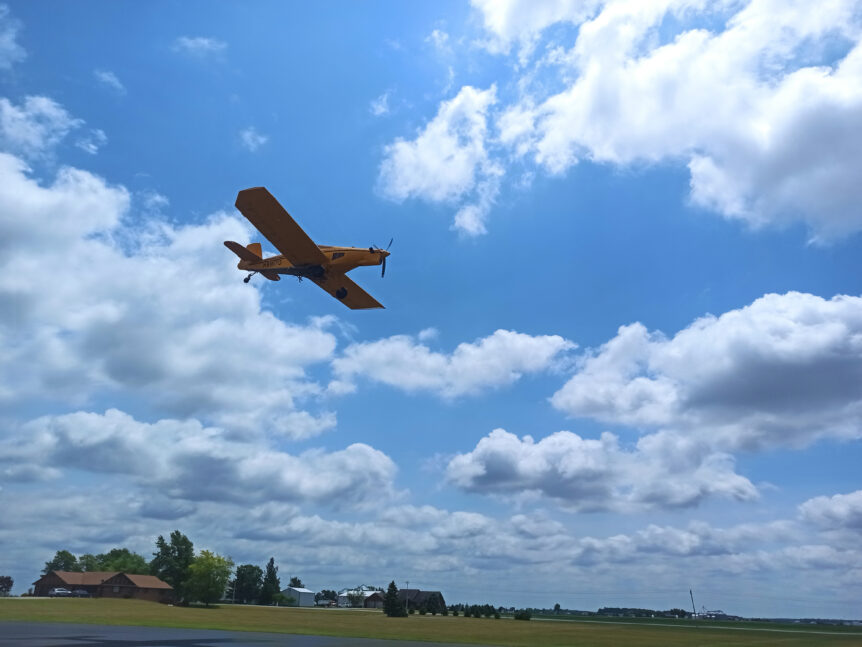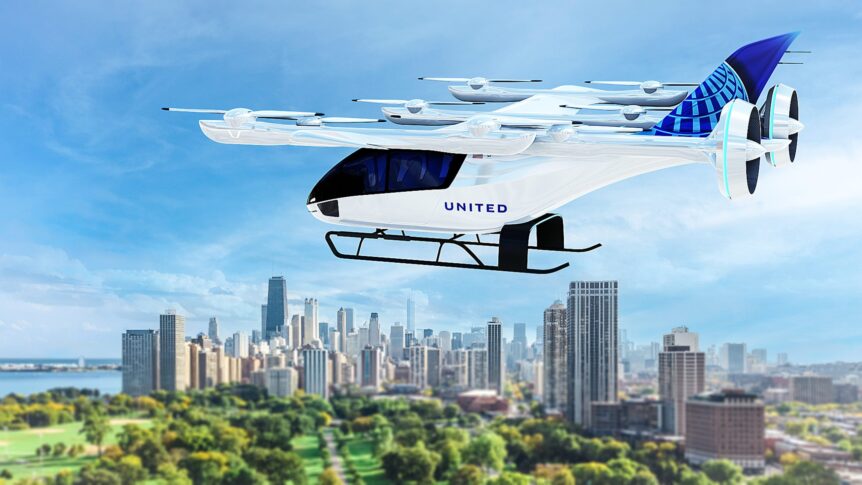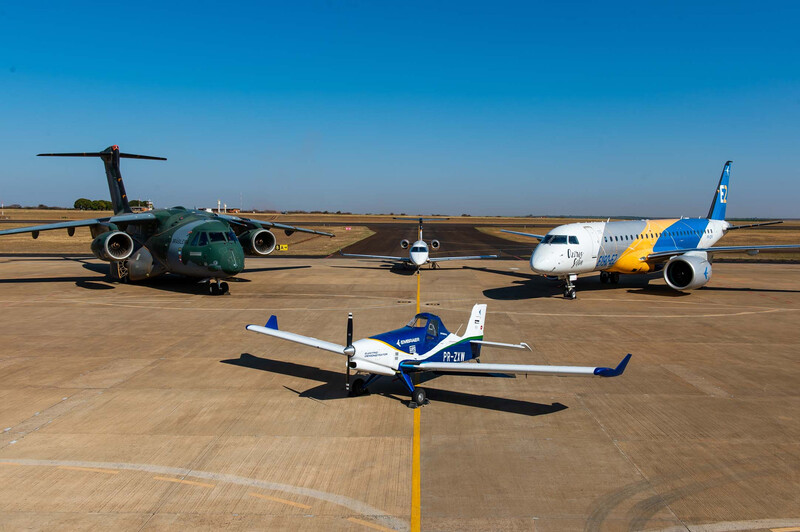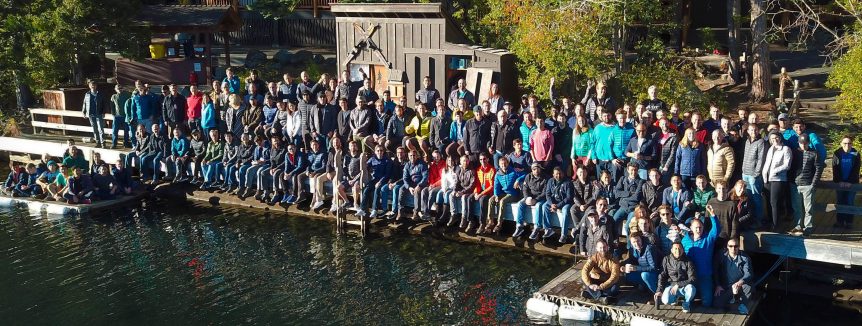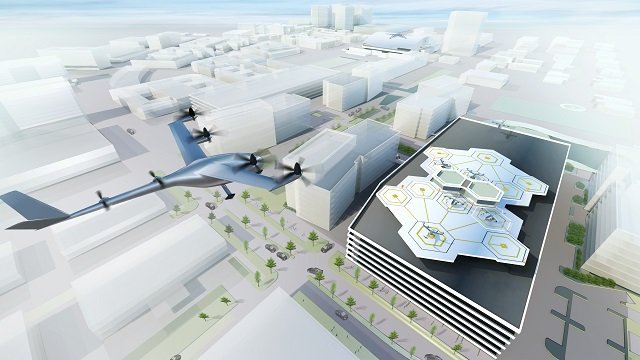Following its announcement of a range of battery packs last month, Wright Electric shares information about its one-megawatt motor powering an Embraer agricultural airplane. Teaming with Axter Aerospace, a Spanish firm with a history of providing backup electric power for otherwise conventionally powered aircraft; Wright helps make crop dusting a safer enterprise. This eight-year-old video shows Axter’s early efforts with a small Tecnam aircraft. (Note: you might want to turn on the closed captioning.) Low-level flying necessary for dusting or spraying crops requires utter reliability, so a proven turbine backed up by a high-power electric motor seems like an ideal combination for those circumstances. The combined power of 800 kilowatts (1,072 horsepower) allows carriage of a large payload, sufficient power to avoid obstacles, and redundancy to prevent sudden letdowns. The electric motor has been tested to 1.2 kilowatts (1,608 horsepower), so could provide adequate power even if the turbine failed. Failure of either power source is highly unlikely in any …
Delta and Joby: United and Archer and Eve
Delta and United Airlines are teaming with eVTOL makers Joby, Archer, and Eve – elevating ways to get to and from their airports. The newly-formed alliances will make airline travel a little less tedious and eliminate the often long and sometimes frustrating drives between flights. Delta and Joby Delta Air Lines will invest $60 million in a partnership with Joby Aviation in return for a two-percent stake in Joby and a seat on its board. Joby can receive another $140 million if it meets “certain milestones.” The selling points of convenience and time saving could certainly entice prospective customers. Initially set up as premium services in New York City and Los Angeles, passengers would still rely on automobiles or shuttles to get them from home or office to a heliport (eventually to be a “vertiport”). There, the passenger boards a Joby five-seat tiltrotor aircraft and flies to the airport in around 10 minutes – a huge time saving over ground …
Embraer Electrifies Agricultural Aviation
Embraer, a Brazilian aircraft maker with ties to Boeing, has been tilling the clean aviation field for several years. Their current agricultural craft, the EMB 203, has flown on ethanol for some years – a kind of farm-to-aircraft symbiotic relationship. Going to the next step toward clean, green aviation, Embraer has since devised an electrical powertrain in cooperation with WEG Equipamentos Elétricos and EDP. Embraer is deeply involved in programs headed toward making the skies greener. This includes everything from their aircraft designs to their “DIPAS PROGRAM – DIPAS (Integrated Development of an Environmentally Sustainable Product).” This program considers “current and future environmental legislation,” alternative technologies and their life cycles. The program works toward reducing fuel consumption, CO2 emissions, noise, and maintenance costs, while, “Increasing operational efficiency and comfort for the pilot and passengers.” Other operations to incorporate electrification of flight include Embraer X’s Eve, the company’s approach to urban aerial mobility, and other efforts to offset or mitigate harmful …
Joby and Uber Elevate Form Partnership
In a new partnership agreement, Uber Elevate recently added Joby Aviation to its stable of aircraft companies which are to supply craft for its Urban Air Mobility program. Joby builds electric motors, 12 of which line the wing of NASA’s X-57 Maxwell, with two larger motors for forward thrust when the small units are shut down. This inventory of electric motors on the NASA project gives Joby a certain entrée to interest from the Urban Air Mobility movement, and it’s received that interest from Uber. Well financed in its own right, Joby has committed to meeting Uber’s desire to have operating sky taxis in the air by 2023, as reported by Andrew J. Hawkins in The Verge. We have written about Joby several times in the past, including this 2014 report that includes an early rendition of the Maxwell project. Much has happened for Joby since then. Hawkins picked up the story in 2018. “Joby is the brainchild of inventor …
Uber Elevate Summit Announces Sky Taxis by 2020
A scad of news about electric aircraft hit the internet and newsstands last week. Even USA Today reported on the Uber Elevate Summit in Dallas, Texas – held with many of the participants in the 2017 Sustainable Aviation Symposium a few days before. Big news came from Uber’s announcement that it intends to offer electric VTOL (vertical takeoff and landing) air taxi service in Dallas and Dubai by 2020. Bigger news for SAS participants is that it is partnering with Pipistrel and Aurora Flight Sciences, both presenting at the San Francisco event. Jeff Holden, Uber’s chief product officer, said Bell Helicopters, Brazil’s Embraer, and Mooney Aircraft would also provide “concepts and technologies” for the near-term launch. According to Aviation Daily, “Aurora has already flown a quarter-scale model of its concept, using elements of the electric propulsion system flown in the subscale demonstrator for DARPA’s XV-24A LightningStrike high-speed VTOL aircraft.” Aurora’s concept for Uber is a two-seat eight-rotor (for vertical lift) …
Boeing and Embraer Embrace on Biofuels
Brazil may become a central research and manufacturing site for biofuels, with Boeing and Embraer opening a joint sustainable biofuel research center, something that will rely on Brazil’s fertile land to supply non-food plants with which to make jet fuel. Working in the Boeing-Embraer Joint Research Center in the São José dos Campos Technology Park, opened in January 2014, the companies are continuing to “focus on technologies that address gaps in creating a sustainable aviation biofuel industry in Brazil, such as feedstock production, techno-economic analysis, economic viability studies and processing technologies.” Boeing’s Research & Technology-Brazil (BR&T-Brazil) Center, one of the company’s six international advanced research centers, leads the collaboration with Embraer and works with Brazil’s research-and-development community “to grow Brazil’s capabilities and meet the country’s goals for economic and technology development while supporting the creation of innovative and affordable technologies for Boeing’s business units.” This is one of several biofuel development projects in the U. S., the Middle East, Africa, …
Measuring Up To Standards
ASTM International, formerly known as the American Society for Testing and Materials, develops “international consensus standards” for many industries, using input from its members in many fields and disciplines. Their D-7566-11 “Standard Specification for Aviation Turbine Fuel Containing Synthesized Hydrocarbons” governs what can be put into jet and turbo-prop aircraft. Updated in July 2011, it now allows the use of biologically-derived fuel “without the need for special permissions,” according to SAE International, itself a standards organization, and as reported by Patrick Ponticel. United Airlines was quick to take advantage of the revised standard, using “Solazyme-supplied algae oil that was refined into jet fuel by Honeywell’s UOP division near Houston. The blend used for the November 7, Boeing 737-800 flight was 40-percent Solazyme’s Solajet and 60-percent petroleum-derived commercial jet fuel (Jet-A).” SAE explains that, “Under the ASTM standard, up to 50-percent bio-derived synthetic blending components can be added to conventional jet fuel. These renewable fuel components, called hydroprocessed esters and fatty acids …

